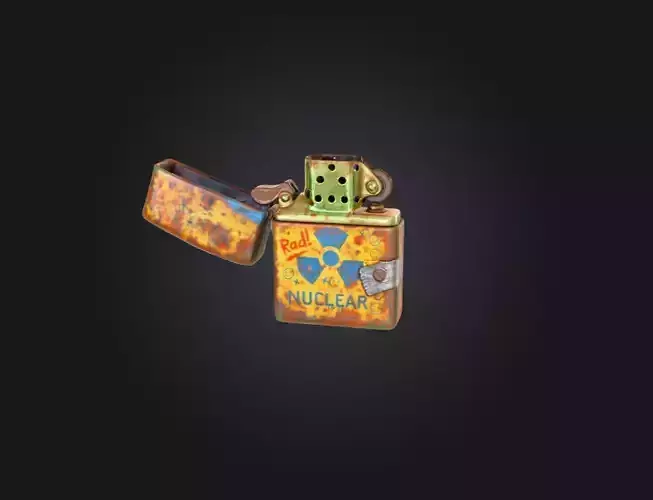1/29
The Post-Lighter is a striking relic of a world long since ruined—an everyday object transformed into a symbol of survival, identity, and defiance in the aftermath of disaster. Once an ordinary metal lighter, it now bears the scars of the post-apocalyptic wasteland: rusted edges, scorched metal plating, and makeshift repairs that speak of countless repairs and desperate reuse. The casing is covered in faded, hand-painted graphics featuring a radioactive symbol and graffiti-style markings, suggesting that its owner viewed it not just as a tool, but as a personal badge of resilience. Bright yellows, blues, and burnt oranges mingle with rust and corrosion, giving the lighter a unique aesthetic that blends hazard with nostalgia.
Despite its battered state, the Post-Lighter remains functional, its internal mechanism preserved through crude maintenance and scavenged parts. A piece of metal patching holds part of the casing together, while the flint wheel and ignition arm show heavy wear, polished smooth by repeated use. In a world where fire means warmth, cooked food, sterilization, and protection, this lighter becomes far more valuable than its original purpose. It represents life, hope, and the ability to endure when everything else has fallen into decay.
Within narrative settings, the Post-Lighter can serve as a key story artifact—a sentimental keepsake of a lost era, a rare item traded among survivors, or even a symbol of a faction known for their resourcefulness. Its radioactive-themed decoration hints at a culture shaped by exposure to nuclear fallout, where danger becomes a normal part of daily existence. Whether used by a lone scavenger roaming the ruins, a rebellious courier, or a veteran wasteland wanderer, the lighter carries emotional weight and world-building depth.
As a visual asset, it fits seamlessly into post-apocalyptic, dieselpunk, survival, and retro-futuristic environments. Its detailed wear and character make it ideal as a prop for games, cinematic scenes, or storytelling illustrations where small objects tell big stories.
REVIEWS & COMMENTS
accuracy, and usability.





























